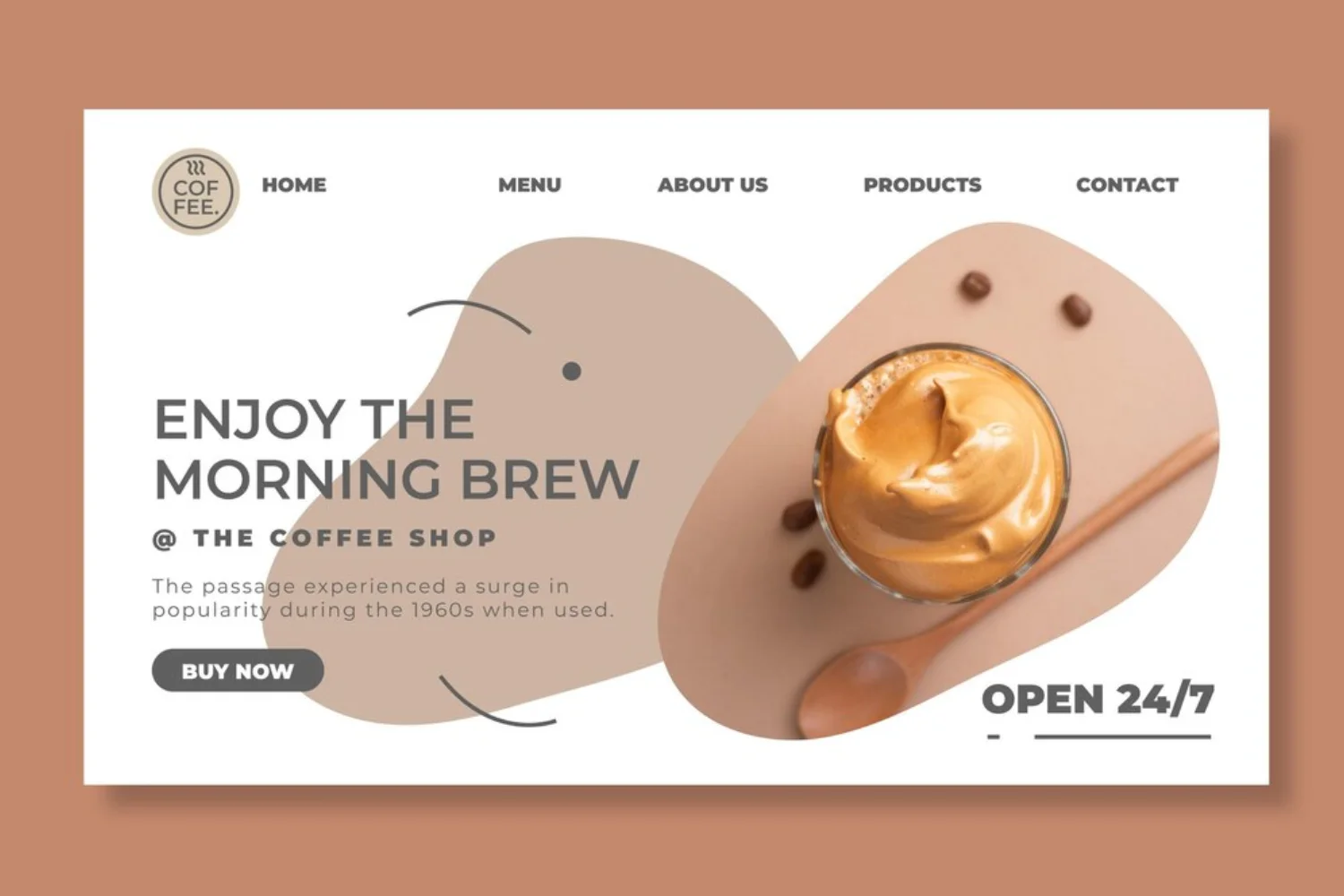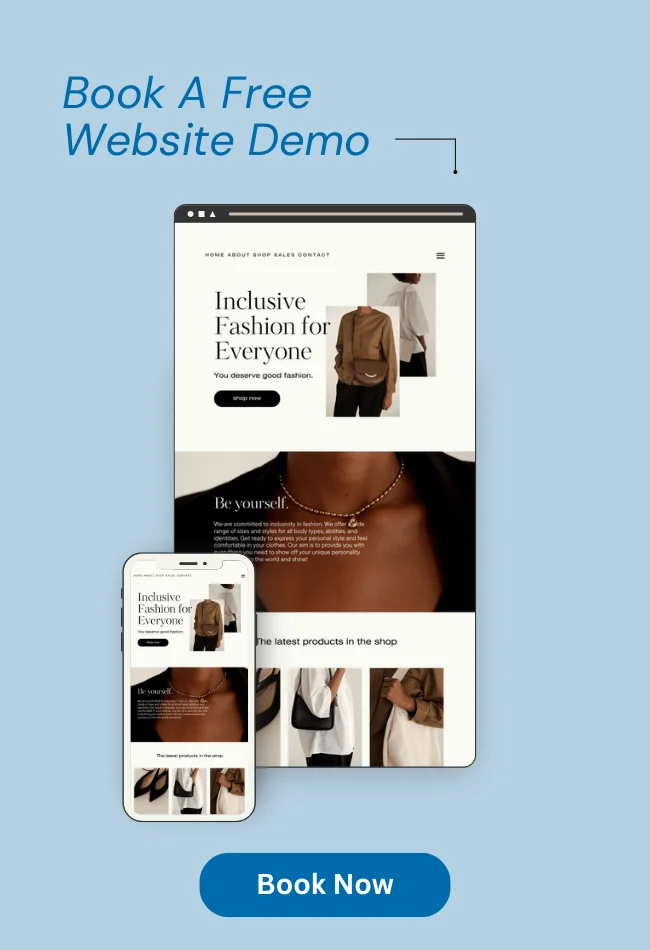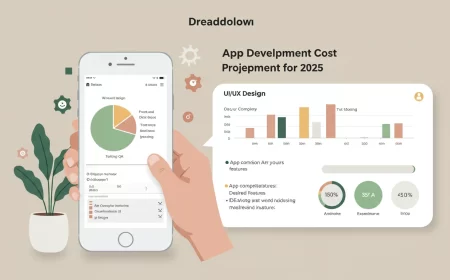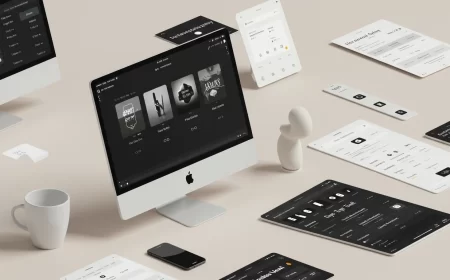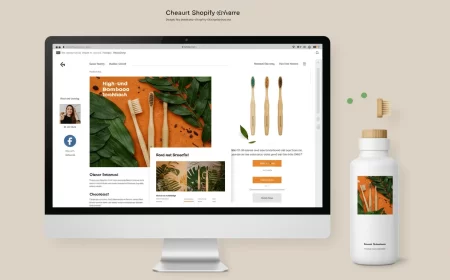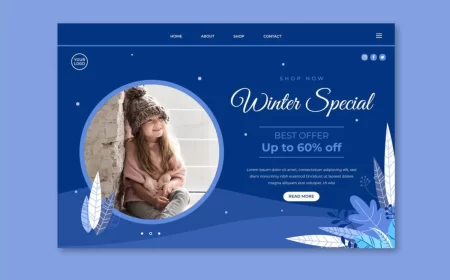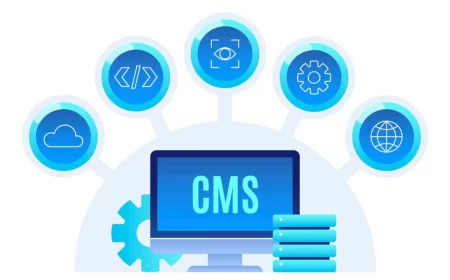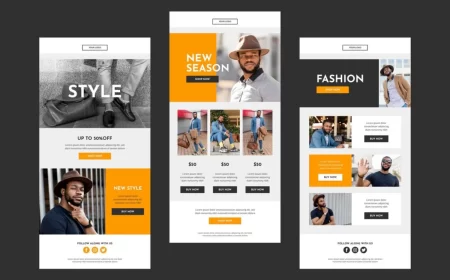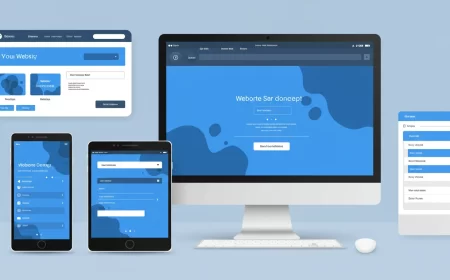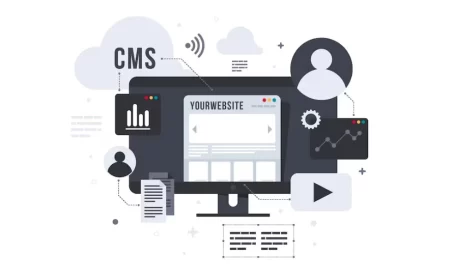In an era where convenience, transparency, and engaging experiences are paramount, cafeterias—whether in schools, corporate offices, hospitals, or public spaces—are stepping up their game. A well-designed online presence is no longer a luxury but a necessity. The best cafeteria websites are transforming traditional dining halls into vibrant, accessible, and informative hubs, streamlining operations, enhancing user satisfaction, and fostering a deeper connection with their patrons. More than just a place to list daily specials, these digital platforms are becoming integral to the modern cafeteria experience.
This guide will explore the essential characteristics that define a top-tier cafeteria website. We’ll delve into the strategic elements that make these sites impactful for various types of cafeterias, provide actionable advice on building your own, and showcase inspiring examples that master the art of digital dining. Whether you’re managing a school lunch program, a corporate dining facility, or a public eatery, understanding these best practices is crucial for cultivating connection and serving up success.
Why a Strong Online Presence is Crucial for Modern Cafeterias
The perception of cafeterias has evolved. Today’s diners, from students and employees to patients and the general public, expect more than just a meal; they seek information, convenience, and a pleasant experience. A robust online presence, anchored by a well-crafted website, addresses these modern demands and offers numerous benefits:
- Transparency and Trust: Users want to know what they’re eating. Websites can provide detailed nutritional information, allergen alerts, and sourcing details, building trust and catering to dietary needs.
- Convenience and Efficiency: Online menus, pre-ordering systems, and payment options save time, reduce queues, and improve the overall dining experience, especially in busy environments.
- Enhanced Communication: Websites serve as a central hub for daily menus, special events, holiday hours, and important announcements, ensuring everyone stays informed.
- Brand Building and Engagement: A well-designed website can elevate the cafeteria’s image, making it feel modern, inviting, and aligned with the values of its institution (e.g., a school’s commitment to student well-being, a company’s focus on employee welfare).
- Feedback and Improvement: Online platforms can facilitate feedback mechanisms, allowing cafeteria management to gather insights and continuously improve their offerings.
- Sustainability Initiatives: Websites can highlight efforts towards sustainability, such as local sourcing, waste reduction, and healthy eating campaigns, resonating with environmentally conscious patrons.
Key Features of the Best Cafeteria Websites
What makes a cafeteria website truly effective? It’s a combination of aesthetics, functionality, and compelling content tailored to its specific audience.
- Dynamic and Easy-to-Update Menus: This is the cornerstone. Menus should be easily viewable, ideally not as PDFs, and updateable in real-time. They should include:
- Daily Specials: Clearly highlighted.
- Nutritional Information: Calories, macros, etc.
- Allergen Information: Prominently displayed for common allergens (nuts, dairy, gluten, soy).
- Dietary Filters: Options for vegetarian, vegan, gluten-free, halal, kosher, etc.
- High-Quality Food Photography: Appetizing images entice diners and showcase the quality of the food.
- Intuitive Navigation: Users need to find information quickly. A clean, logical menu structure is vital.
- Mobile Responsiveness: Essential for users checking menus on the go from their smartphones or tablets.
- Online Ordering & Pre-payment (Optional but Recommended): For corporate or public cafeterias, this can significantly reduce wait times and improve efficiency.
- Feedback Mechanism: A simple contact form or survey link for suggestions and comments.
- About Us/Our Philosophy: Share the cafeteria’s mission, commitment to fresh ingredients, or healthy eating initiatives.
- Location & Hours: Clear details, especially for public or multi-location cafeterias.
- News & Announcements: A section for updates on special events, theme days, or operational changes.
- Sustainability & Sourcing Information: Highlight local partnerships or eco-friendly practices.
- Careers/Job Opportunities (for larger operations): If applicable, a section for employment.
Inspiring Examples: The Best Cafeteria Websites in Action
Let’s explore some of the best cafeteria websites that exemplify effective online strategies across various types of dining facilities. While direct “cafeteria” websites are less common than general restaurant sites, we can draw inspiration from those that prioritize menu presentation, user experience, and institutional communication.
School Cafeteria Websites
These sites often focus on nutrition, parent communication, and student engagement.
- The Lunch Box (Chef Ann Foundation): While a resource for school food professionals, its design principles—focus on healthy eating, clear recipes, and operational transparency—are excellent models for school cafeteria sites. It emphasizes scratch cooking and provides tools for menu development.
- SchoolCafé: This platform offers integrated school nutrition management software, and its public-facing side demonstrates best practices for online menus, payment systems, and nutritional information for parents and students.
- Local School District Food Service Pages (e.g., large public school districts): Many large school districts have dedicated food service pages that provide daily menus, nutritional breakdowns, payment portals, and information on free/reduced lunch programs. (Specific examples vary widely by district, but a search for ” [Your City/District Name] school lunch menu” will often lead to good local examples.)
- Hatco Corporation (School Cafeteria Equipment): While a supplier, their site highlights the features of a good school cafeteria experience, including efficiency, safety, and appealing food presentation, which translate into website design needs.
Corporate Cafeteria Websites
These sites prioritize employee convenience, diverse menus, and often reflect company culture. (Many corporate cafeterias are managed by large food service providers, so their online presence might be part of a larger portal.)
- Zerocater (Corporate Cafeteria Management): Their website showcases solutions for corporate dining, emphasizing personalized menus, reduced waste, and user-friendly ordering apps. This reflects the ideal features of a corporate cafeteria website.
- Café Services® (Corporate Dining Services): Highlights their approach to corporate dining, focusing on variety, local sourcing, custom menus, and health & wellness. Their site demonstrates how to present comprehensive food service offerings.
- GoKhana (Corporate Cafeteria Management): An award-winning digital cafeteria management solution, their website emphasizes contactless ordering, real-time tracking, and a seamless experience for employees and management.
- Compass Group (Eurest, Chartwells, etc.): As one of the largest food service providers, their client portals for corporate dining often feature sophisticated online menus, pre-order systems, and feedback mechanisms. (Specific client portals are not publicly linked, but their main sites illustrate their capabilities).
- Sodexo (Corporate Services): Similar to Compass Group, Sodexo’s corporate dining solutions often include comprehensive digital platforms for menu management, dietary information, and user engagement for employees.
- Aramark (Workplace Dining): Another major player, Aramark’s digital tools for corporate cafeterias focus on convenience, variety, and personalized experiences for employees.
Hospital Cafeteria Websites
These websites often emphasize healthy options, visitor information, and clear operating hours for diverse audiences.
- Massachusetts General Hospital (Cafeterias and Cafés): Provides clear information on their various dining locations, hours, and a commitment to healthy options, serving both patients and staff.
- Cleveland Clinic (Dining Options): Large hospital systems often have detailed dining pages, including daily menus, nutritional facts, and locations for various cafeterias and cafes within their facilities.
- Mayo Clinic (Patient & Visitor Dining): Similar to other major hospitals, Mayo Clinic’s website provides comprehensive information on their dining services, emphasizing healthy choices and convenience for patients and their families.
- ARBA Retail Systems (Hospital Cafeteria POS Systems): While a POS provider, their site outlines the features of an ideal hospital cafeteria system, including online ordering, self-service kiosks, and payroll deductions, which are key for user experience.
- Kaiser Permanente (Dining Services): Many large healthcare providers like Kaiser Permanente offer detailed online menus and dining information for their hospital cafeterias, focusing on healthy and diverse options.
Public & Standalone Cafeteria/Cafe Websites
These sites often blend menu presentation with strong branding and community engagement.
- Cafecito Santa Fe: A beautiful and functional cafe website with excellent food photography, a soothing color palette, clear navigation, and a well-structured web-formatted menu.
- District Café & Bakery: Features professionally shot pictures, all essential information, and an excellent web-formatted menu (not PDF), making it easy for customers to browse their offerings.
- Culture Espresso: This cafe website nails the vibe with natural pictures of their coffee and people enjoying it, creating an inviting atmosphere that reflects their brand.
- Ginger & White London: Features fantastic food photography and a clean, inviting design that showcases their range of coffees, teas, and pastries.
- Summer Moon Coffee: Built with e-commerce in mind, this site allows customers to enjoy their unique oak wood roasted coffee even if they can’t visit a physical location.
- J5 Coffee: A coffee shop website that lets you order ahead, emphasizing convenience and high-quality coffee beans.
- Republic of Pie: A unique bakery and coffee house with a relaxed and casual atmosphere, reflected in its website, which showcases its wide variety of pies and coffee.
- Little Bagel Co.: A visually rich, photography-heavy design that enhances brand storytelling and offers minimalistic navigation for a smooth user experience.
- Fox in the Snow: An example of how simplicity, when done well, can make a big impact, with a focus on strong visual storytelling.
- Colectivo Coffee: Features a well-crafted, distinct brand with community-focused content that highlights local partnerships and events.
- Dudley’s Coffee: A vibrant reflection of the brand’s personality, with distinct illustrations, an effective logo, and a collage-style layout.
- Felix Roasting Co.: A luxurious, visually stunning design that aligns with the brand’s upscale identity, using immersive high-resolution imagery.
- OddShop: Lives up to its name with a bold, eclectic website featuring playful layouts, illustration, typography, and a confident use of color.
- Grit Coffee: Strong emphasis on storytelling, showcasing origins and values, with clean, inviting typography and well-designed e-commerce functionality.
- NOC Coffee: A sleek, modern, and minimal design with a well-organized menu page and strong use of whitespace, creating an elegant and calming browsing experience.
These examples collectively demonstrate the diverse and effective ways cafeterias and similar dining establishments are leveraging the digital space to connect, serve, and inform their patrons.
Tools for Building Your Best Cafeteria Website
Creating an effective cafeteria website doesn’t require advanced coding skills. Many user-friendly platforms and tools are available:
- Website Builders (e.g., Wix, Squarespace, WordPress.com): These platforms offer drag-and-drop interfaces, customizable templates, and integrated e-commerce features, making it easy for anyone to build a professional-looking site. Many offer specific templates for restaurants and cafes.
- Online Ordering & Menu Management Systems (e.g., Toast POS, Orderable, MarketMan): These specialized tools integrate directly into your website, providing seamless menu updates, online ordering, payment processing, and even inventory management.
- High-Quality Food Photography: Invest in professional food photography or learn basic food styling and photography techniques. Appetizing visuals are crucial for enticing diners.
- Nutritional Analysis Software: For institutional cafeterias, software that helps calculate and display nutritional information for menu items is highly beneficial.
- Feedback Forms/Survey Tools (e.g., Google Forms, SurveyMonkey): Easily integrate these into your website to gather valuable feedback from your patrons.
- Social Media Integration: Link your website to platforms like Instagram (for food photos), Facebook (for announcements), and Twitter (for quick updates) to expand your reach.
Frequently Asked Questions (FAQs)
Q1: What is the most important feature for a cafeteria website?
The most important feature is a dynamic, easy-to-read, and regularly updated online menu. It should clearly display daily offerings, nutritional information, and allergen alerts, ideally with high-quality photos.
Q2: Should a cafeteria website include online ordering?
Online ordering is highly recommended for corporate and public cafeterias as it significantly enhances convenience, reduces wait times, and improves efficiency. For school or hospital cafeterias, pre-ordering or pre-payment options can also be very beneficial.
Q3: How can a cafeteria website cater to diverse dietary needs?
The best way is to include clear allergen information (e.g., icons, detailed lists) for each menu item and offer dietary filters (e.g., vegetarian, vegan, gluten-free, dairy-free) that allow users to quickly find suitable options.
Q4: Is it necessary to have professional food photography for a cafeteria website?
While not strictly “necessary,” high-quality, appetizing food photography is highly recommended. It significantly enhances the visual appeal of your menu, entices diners, and conveys the quality and freshness of your offerings, making your website more engaging and effective.
Q5: How often should a cafeteria menu be updated on the website?
Daily updates are ideal for showcasing daily specials and ensuring accuracy. For fixed menus, weekly or monthly updates are sufficient, but any changes to items, pricing, or nutritional information should be reflected immediately.
Q6: What’s the best way to collect feedback on a cafeteria website?
A simple contact form or a link to a short online survey is effective. You can also integrate direct feedback buttons for specific menu items or dining experiences. Making it easy and anonymous encourages more participation.
Q7: How can a school cafeteria website encourage healthy eating among students?
A school cafeteria website can encourage healthy eating by prominently displaying nutritional information, highlighting healthy meal options with appealing visuals, sharing fun facts about ingredients, and potentially including educational content or games related to healthy eating.

